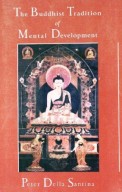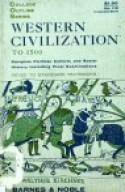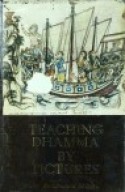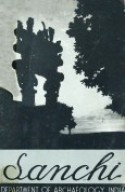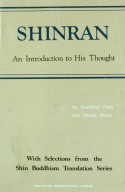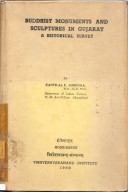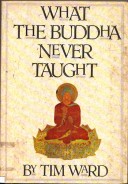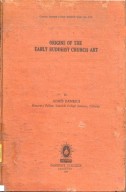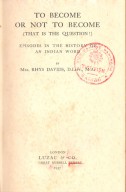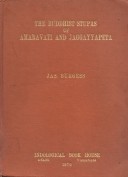Tìm Sách
Sách tiếng Anh-English >> The Buddhist Tradition of Mental Development
Thông tin tra cứu
- Tên sách : The Buddhist Tradition of Mental Development
- Tác giả : Peter Della Santina
- Dịch giả :
- Ngôn ngữ : Anh
- Số trang : 168
- Nhà xuất bản : Manjushri Press-Boston
- Năm xuất bản :
- Phân loại : Sách tiếng Anh-English
- MCB : 1210000008203
- OPAC :
- Tóm tắt :
CONTENTS
Introduction…………………ix
- Confidence and Development …………………1
- Opportunity and Transcience …………………17
III. Frustration and Karma…………………35
- Love and Compassion…………………61
- The Enlightenment Thought…………………81
- Tranquility…………………103
VII. Wisdom…………………129
VIII. Enlightenment and Buddhahood…………………151
INTRODUCTION
The Origins of the Tradition
We call this tradition that we will be discussing the Buddhist tradition because the tradition originated with the Buddha Sakyamuni 2500 years ago in India. This is true of this particular tradition that we will study, and it is also true of other Buddhist traditions like the Theravada and Zen traditions.
This tradition comes down to US today from the Buddha Sakyamuni through a series of transmission. The first phase in this process of transmission was an oral phase.. The teachings were handed down orally from master to disciple, and preserved in the memories of the disciples of the Buddha. This is called the primary oral tradition, and it continued for about four to five hundred years after the demise of the Buddha.
During this period we find the emergence of the primary literary tradition. These teachings of the Buddha began to be written down. It is still very much a codification, a crystallization of the oral tradition. We can see this from the fact that all the teachings in the primary literary tradition begin with the words “Thus, I have heard.” These are believed to be the words of the Buddha’s faithful attendant, Ananda, who retained the teachings in his memory, and passed them on to the other disciples at the Council that was held shortly after the demise of the Buddha.
The primary literary tradition is the canonical foundation from which further developments in the tradition proceed. Following the primary literary tradition, there was a secondary literary tradition, consisting of commentaries and explanations of the primary oral and literary traditions. Foremost among these expositors are figures like Nagarjuna who explained the doctrine of emptiness, and Asanga who focussed on the role of the mind in the production and elimination of suffering.
Contemporaneous with and subsequent to the secondary literary tradition, there was a secondary oral tradition. This had its heyday in the period from the 6th or 7th Century to about the 11th Century CE. What we have in this secondary oral tradition is the production of a very interesting group of people, the men of great attainment (Mahasiddhas). These people came from all walks of life: some from the elite and educated strata of society, some were boatmen and potters. They had one thing in common —they were particularly interested in translating or expressing the wisdom embodied in the primary and secondary literary traditions in terms of ordinary daily life. They used all kinds of symbols and events that we find in our daily life to translate the abstract philosophy of the literary traditions into immediate living experiences.
These three traditions (primary literary, secondary literary, and secondary oral) which, on the one hand, are academic and abstract, and, on the other hand, experiential and living, were transmitted to Tibet from the 7th to the 12th Century. Thus, a remarkable mirror image of the apex of Buddhism was preserved in Tibet. When Buddhism declined, and was almost eradicated in India as an identifiable independent tradition, it was preserved in Tibet. It was preserved in Tibet through a continuous process of renewal and re-verification, through the application of the teachings in the context of personal experience. The teachings were preserved not only as cultural or intellectual fossils, but also as a living tradition— re-experimented and re-experienced by its practitioners. This is the tradition that we will be discussing here.
The Key to Self Development
We also call this a tradition of mental development because in Buddhism the mind is the key to development. It is the most essential thing in personal development. Different traditions begin at different points. For example, in the Semitic traditions, one begins with God. In certain political philosophies like Marxism, one begins with society or the economic sphere. In Buddhism, we begin with mind. Mind is the key to progress. Why is this so? It is because there is no experience without mind. There is no happiness and no frustration without mind. All of these are mind-dependent. All our experiences come to us through our mind. The sense organs—eyes, ears, nose, tongue and skin—do not sense apart from the mind. Thus, it is clear that if we want to change the character of our experience, we must change the character of our mind. If we wish to cover the entire surface of the earth with carpet in order to protect our bare feet from the sticks and stones, it would be a very difficult task. But simply by covering our feet with leather, it is as if the whole surface of the earth were covered with leather. In the same way, if we want to remove greed, anger and delusion from the earth, it would be a very difficult task. But by removing greed, anger and delusion from our mind, it is as if they were removed from the world. This is why we have this focus on mind as the key to self-development. By changing the condition and character of our mind, we can change the character of our experience.
One of the very first steps in mental development is observation of the behavior of our minds. We will see that almost exclusively our minds are reactive. In other words, our minds continuously react to stimuli. When we see certain images, our minds react to them. .When we hear certain sounds, taste certain foods, smell certain scents, our minds react to them. There is almost no occasion in the course of an undeveloped mental continuum when our minds are not reactive. A well-known teacher says that our minds are like vending machines. You put in a coin and you get a reaction.
This reactive process of the mind is only a semiconscious process. We are not fully aware. We are sleepwalking, so to speak. We are constantly reacting in a mechanical automatic way. We are cogs in a machine because we have no self-awareness. But once we become aware of the reactive character of the mind, of how much we are prisoners to reactions, this is the beginning of mental development. This awareness creates a modicum of space in which to begin a new kind of mental process – in which to shift over from reaction to creativity.
In this way, we can begin to work with the mind, enlarging that area of awareness, control and development so that eventually we are acting in a free, creative and positive way. We cease to be cogs in a machine. We can exert a positive influence both in our personal life and in the lives of others. We will be talking about mental development—about how we can use the power of this most powerful thing we have at our disposal, the power of our mind, to transform the quality of our experience.
 Facebook
Facebook
 Google
Google
 Google+
Google+
